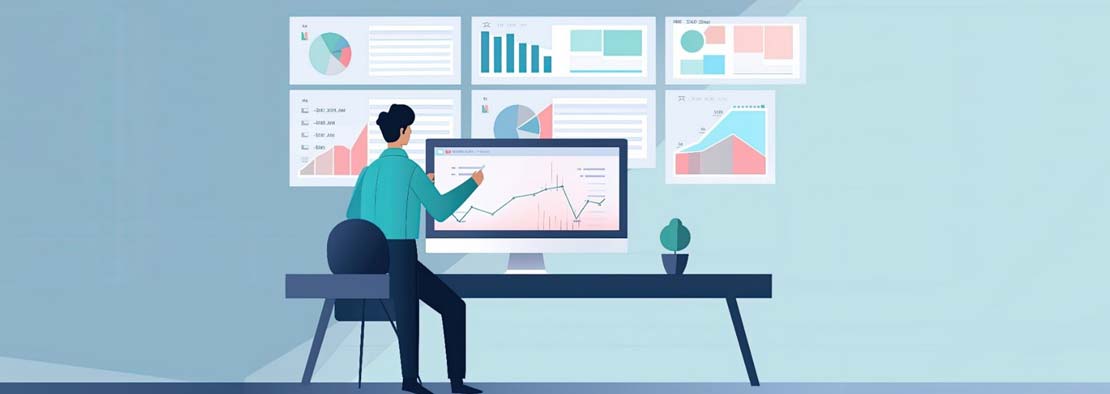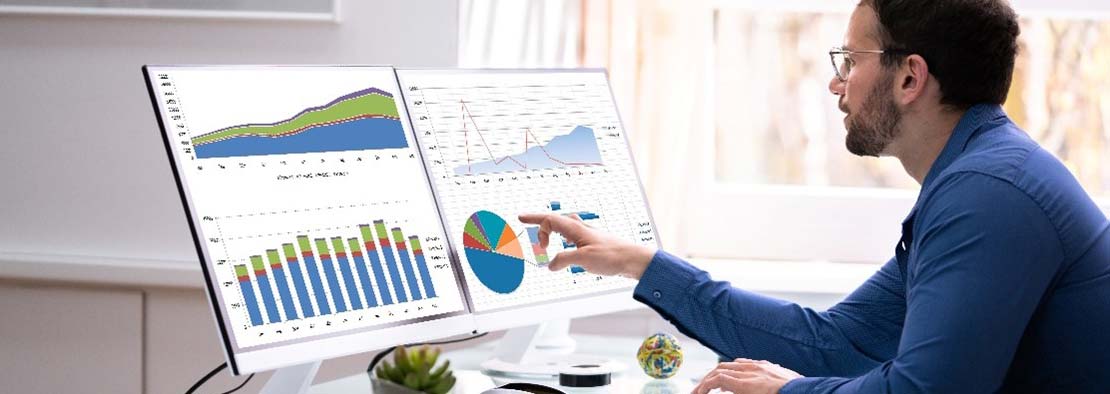- September 20, 2023
- Posted by: GMAS Team
- Category: Blog

In the ever-evolving landscape of healthcare, predictive analytics has emerged as a powerful tool to enhance patient care, streamline operations, and improve overall healthcare outcomes. Leveraging data to make informed decisions has become essential, and Tableau, a leading data visualization and business intelligence platform, has proven to be a game-changer in the field of predictive analytics within the healthcare industry. In this blog, we’ll delve into how using Tableau can significantly improve predictive analytics in healthcare, helping healthcare providers, administrators, and researchers make data-driven decisions that can save lives and resources.
 The Power of Predictive Analytics in Healthcare
The Power of Predictive Analytics in Healthcare
Predictive analytics involves the use of historical data, statistical algorithms, and machine learning techniques to identify trends, patterns, and potential future events. In healthcare, predictive analytics can:
Enhance Patient Outcomes: Predictive models can identify patients at high risk of specific conditions or complications, enabling proactive interventions to prevent or manage these issues effectively.
Optimize Resource Allocation: Healthcare providers can allocate resources such as staff, equipment, and facilities more efficiently by anticipating patient demand and optimizing workflow.
Reduce Healthcare Costs: Predictive analytics can help identify unnecessary tests, procedures, or hospitalizations, leading to cost savings without compromising patient care.
Improve Population Health: By analyzing population data, healthcare organizations can identify health trends, develop targeted interventions, and monitor the effectiveness of public health programs.
Personalize Patient Care: Predictive analytics allows healthcare providers to tailor treatment plans and interventions based on individual patient characteristics, leading to more effective care.
The Role of Tableau in Predictive Analytics
Tableau is a versatile data visualization and analytics platform that excels in helping organizations make sense of complex data. In the context of predictive analytics in healthcare, Tableau offers several advantages:
Data Integration and Accessibility: Tableau can seamlessly integrate with various data sources, including Electronic Health Records (EHRs), claims data, patient surveys, and external health data sets. This integration enables healthcare organizations to access and analyze comprehensive datasets in one place.
Data Visualization: Tableau’s intuitive and user-friendly interface allows users to create interactive, visually appealing dashboards and reports. Visualization is a crucial aspect of predictive analytics, as it makes complex data more understandable and actionable.
Real-time Analytics: Healthcare data is often time sensitive. Tableau’s real-time data processing capabilities enable healthcare professionals to monitor patient conditions and hospital operations in real-time, facilitating timely interventions.
Machine Learning Integration: Tableau supports machine learning algorithms and predictive modeling, allowing data scientists to develop and deploy predictive models directly within the platform. This integration streamlines the process of building, validating, and operationalizing predictive models.
Scalability: Tableau is scalable and can handle large datasets, making it suitable for healthcare organizations of all sizes, from small clinics to large hospital networks.
Use Cases of Tableau in Healthcare Predictive Analytics
Let’s explore some real-world examples of how Tableau has been employed to improve predictive analytics in healthcare:
Patient Readmission Predictions: Hospitals can use Tableau to analyze historical patient data and build predictive models to identify individuals at risk of readmission. By monitoring these patients closely and providing targeted interventions, hospitals can reduce costly readmissions.
Early Disease Detection: Tableau can help healthcare providers identify patterns in patient data that may indicate the early onset of chronic diseases like diabetes or heart disease. This early detection allows for more effective disease management and prevention.
Resource Optimization: Hospital administrators can utilize Tableau to analyze patient admission and discharge patterns. This information can be used to optimize staffing levels, bed allocation, and other resources, ensuring efficient operations and cost savings.
Population Health Management: Public health agencies can use Tableau to track disease outbreaks, vaccination rates, and other population health metrics. This data can inform public health interventions and improve overall community health.
Clinical Research: Researchers can leverage Tableau to visualize and analyze clinical trial data. This aids in identifying trends, assessing the effectiveness of treatments, and expediting the development of new therapies.
 Best Practices for Using Tableau in Healthcare Predictive Analytics
Best Practices for Using Tableau in Healthcare Predictive Analytics
To maximize the benefits of Tableau in healthcare predictive analytics, it’s important to follow the best practices:
Data Quality: Ensure that your data is clean, accurate, and up to date. Tableau’s data preparation tools can assist in this regard.
User Training: Invest in training and education for healthcare professionals and data analysts to empower them to use Tableau effectively.
Collaboration: Promote collaboration between data scientists, clinicians, and administrators to ensure that predictive models align with clinical workflows and patient care.
Data Security: Maintain strict data security measures to protect patient privacy and comply with healthcare regulations like HIPAA.
Continuous Improvement: Regularly evaluate and refine your predictive models and data visualizations to adapt to changing healthcare dynamics.
In the healthcare industry, where data-driven decisions can have a direct impact on patient well-being and organizational success, Tableau emerges as a powerful ally in predictive analytics. Its ability to integrate, visualize, and analyze healthcare data makes it an invaluable tool for healthcare providers, administrators, and researchers. By harnessing the capabilities of Tableau, healthcare organizations can enhance patient care, optimize resources, reduce costs, and ultimately improve the overall health of their communities. The future of healthcare lies in data, and Tableau is at the forefront of transforming that data into actionable insights.
